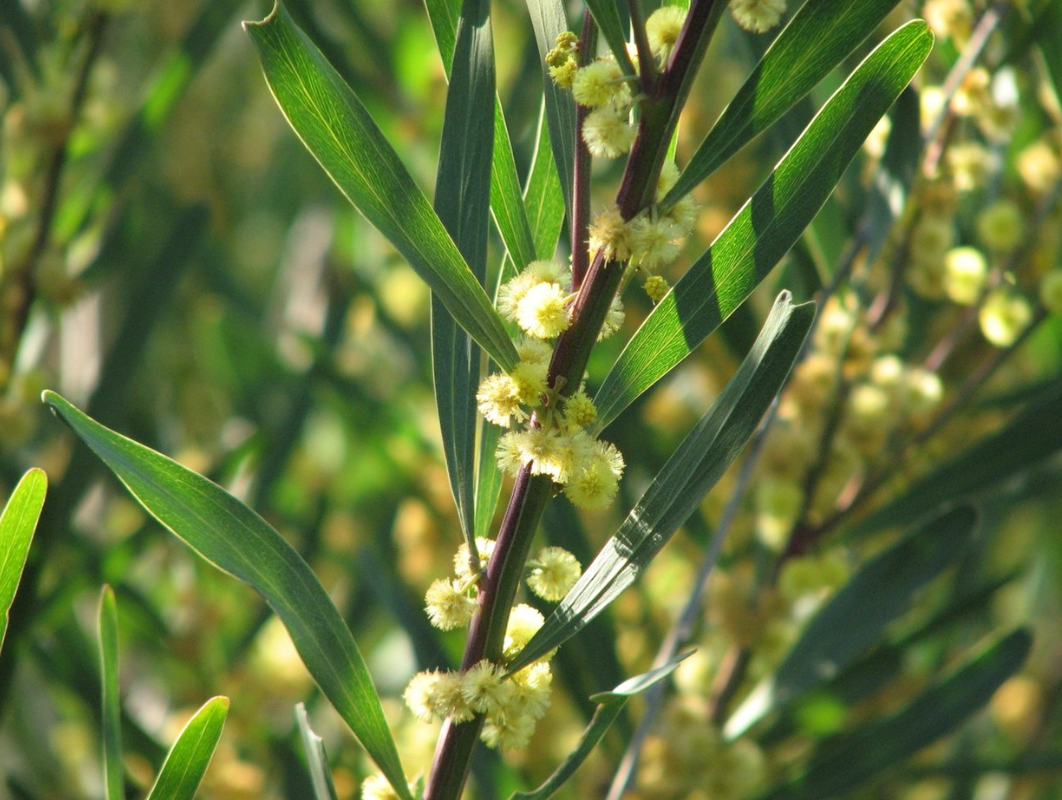Acacia stricta
Acacia stricta
Couldn't load pickup availability
Common Name: Hop Wattle
Description: Acacia stricta, commonly known as Hop Wattle, is an erect or spreading shrub to small tree, reaching up to 6 metres in height. It is found in wet and dry sclerophyll forest, woodlands, and heath, on a range of soils. It grows all along the NSW coastal and tablelands subdivisions, extending into the southwestern slopes, as far west as around Albury. It grows through the approximate southern half of Victoria (mostly close to the coast) and grows around Mt Gambier and Robe in South Australia. It extends into southeastern Queensland, as far north as Caboolture, and also occurs over much of Tasmania.
The phyllodes (modified leaves) are narrowly elliptic, to linear-oblanceolate, to 14 cm long and to 1.5 cm wide, green to blue-green, sometimes with a small point (mucro) at the apex. In this species, up to 30 very small staminate flowers are produced in globular heads, up to 5 mm in diameter, which are held in groups of 2 to 4, in the leaf axils; pale yellow to white, occurring in spring. The seed pods are straight, to 10 cm long and 0.5 cm wide.
In Melbourne's climate, Acacia stricta thrives in well-drained soils and can be planted in full sun to semi-shade positions. It is drought-tolerant once established and can withstand frost, making it suitable for various garden settings. Regular pruning after flowering helps maintain a compact and tidy form. However, it's important to note that Acacia stricta has naturalised in parts of Victoria and may become invasive in certain areas. Gardeners should monitor its spread and avoid planting near natural bushland to prevent unintended ecological impacts.
Form:
- Shrub - Medium
- Shrub - Large
Mature Size:
- Height: Approximately 2 to 6 metres
- Width: Approximately 2 to 4 metres
Aspect:
- Full Sun
- Part Shade
Flowering:
- Flowers in Spring
Flower Colour:
- Pale Yellow
Key Attributes:
- Australian native
- Drought Tolerant
- Frost Tolerant
- Bee Attracting
- Fast Growing
- Suitable for Hedging
- Potentially invasive in Victoria
Toxicity: No known toxicity to humans or animals.
Companion Plants:
- Grevillea species
- Callistemon (Bottlebrush) species
- Leptospermum (Tea Tree) species
- Eucalyptus species

Enter Your Postcode Below & Click 'Check' To See Delivery cost To Your Area
- Choosing a selection results in a full page refresh.
- Opens in a new window.

